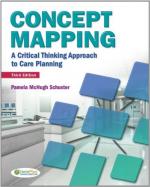|
This section contains 2,118 words (approx. 8 pages at 300 words per page) |

|
Genetic mapping is the process of measuring the distance between two or more loci on a chromosome. In order to determine this distance, a number of things must be done. First, the loci (pronounced "low-sigh") have to be known, and alleles have to exist at each locus so that they can be observed. The specific pair of alleles that are present is usually referred to as a geno-type. Second, there has to be a way to measure the distance between the loci.
In genetic mapping, this distance is measured by the amount of meiotic recombination that occurs between the two loci. Meiotic recombination is the process in which the two chromosomes that are paired during meiosis each break apart and then reattach to each other, rather than back to themselves. These recombined chromosomes will end up in either eggs (for women) or sperm (for men).
Typically for any...
|
This section contains 2,118 words (approx. 8 pages at 300 words per page) |

|


